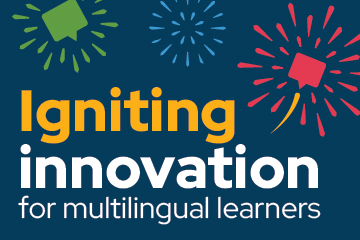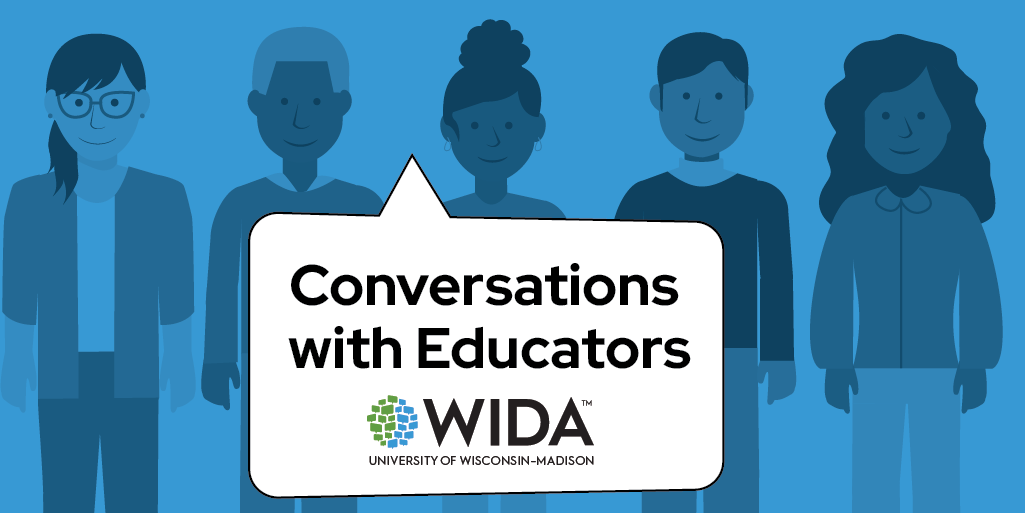Resources/Recursos
Featured Resources



All resources/Todos los recursos
Filter resources by:
Resources/Recursos
Individual Characteristics Questionnaire
Individual Characteristics Questionnaire (ICQ), which is part of WIDA Alternate ACCESS, captures characteristics of students who take Alternate ACCESS. Test Administrators will fill out the ICQ for each student and that information will be reported on the Individual Student Report. ICQ information can help educator teams make program decisions for students. Prior to administering Alternate ACCESS, download and print this example ICQ and use it to consult with Individual Education Plan (IEP) team members about students. Final responses will be entered on the Student Response Booklet.
Resource Details View Download NowReleased June 2025
Curriculum Amplification Guide and Template
The Curriculum Amplification Guide and Template supports educators as they work to align their academic curricula to the WIDA English Language Development (ELD) Standards Framework, 2020 Edition. It guides educators through three analysis criteria to examine the strength of alignment and guiding questions to support amplifying the alignment across all units of an academic curriculum.
This template is an extension of the WIDA Focus Bulletin Taking a Genre-Based Approach to Curricular Development Using the Curriculum Amplification Guide. To learn more, we encourage you to read the Focus Bulletin.
Resource Details View Download NowReleased May 2025
Sample WIDA Alternate ACCESS School Frequency Report
School frequency reports show the number of students who've tested at each proficiency level for all domains. There are separate reports for each grade.
Resource Details View Download NowReleased February 2025
Sample WIDA Alternate ACCESS Student Roster Report
Student Roster Reports show individual students' domain, composite and overall scores. There are separate reports for each grade.
Resource Details View Download NowReleased February 2025
Sample WIDA Alternate ACCESS District Frequency Report
District Frequency Reports show the number and percentage of tested students who scored at each proficiency level. There are separate reports for each grade.
Resource Details View Download NowReleased February 2025
Sample ACCESS for ELLs Student Roster Report
Student Roster Reports show individual students' domain, composite and overall scores. There are separate reports for each grade.
Resource Details View Download NowReleased February 2025
Sample ACCESS for ELLs School Frequency Report
School frequency reports show the number of students who've tested at each proficiency level for all domains. There are separate reports for each grade.
Resource Details View Download NowReleased February 2025
Sample ACCESS for ELLs State Frequency Report
State Frequency Reports show the number and percentage of tested students who scored at each proficiency level. There are separate reports for each grade.
Resource Details View Download NowReleased February 2025
Sample Alternate ACCESS Individual Student Report for Families
This version of the report is for families and provides information about a student’s scores on the Alternate ACCESS English language proficiency test. The report contains the critical information families need to know and can be sent home with students and/or discussed at conferences with parents/guardians.
Resource Details View Download NowReleased February 2025
Sample ACCESS for ELLs Individual Score Report (English)
This report provides information about the student’s scores on the ACCESS for ELLs English language proficiency test. This test is based on the WIDA English Language Development Standards and is used to measure students’ progress in learning English. Scores are reported as Language Proficiency Levels and as Scale Scores.
Resource Details View Download NowReleased February 2025
Sample WIDA Alternate ACCESS State Frequency Report
State Frequency Reports show the number and percentage of tested students who scored at each proficiency level. There are separate reports for each grade.
Resource Details View Download NowReleased January 2025
Sample ACCESS for ELLs District Frequency Report
District Frequency Reports show the number and percentage of tested students who scored at each proficiency level. There are separate reports for each grade.
Resource Details View Download NowReleased January 2025
Reading Observation Tool
This reading focused observation tool supports educators to observe a student engaging in activities related to reading comprehension in any content area. Use the tool to observe the student during activities that are structured in different ways; for example during teacher-led, whole-group instruction and during small group or independent activities.
Resource Details View Download NowReleased September 2024
Community Literacy Mapping
A home and community literacy mapping activity supports students to see the literacy in their daily lives and enables the teacher to learn about their students’ literacy assets. Use this resource to plan a literacy mapping activity with your students.
Resource Details View Download NowReleased August 2024
Creating a Reader Portrait
A reader portrait is a chance to reflect on what you understand about a student’s reading and what you could learn more about. Use this activity to connect what you already know, questions you have, English language development (ELD) data in all domains, and what you know about the student’s home language(s).
Resource Details View Download NowReleased August 2024
Reading Conference Planning
This reading-focused conferencing tool helps plan a one-on-one conversation with a student about how they understand a text. Use this tool alongside one or two teacher-selected text excerpts.
Resource Details View Download NowReleased August 2024
Sample Alternate ACCESS Individual Student Report for Educators
This version of the report is for educators and provides information about a student’s scores on the Alternate ACCESS English language proficiency test. This test is based on the WIDA Alternate English Language Development Standards and is used to measure students’ progress in learning English. Scores are reported as Language Proficiency Levels and as Scale Scores.
Resource Details View Download NowReleased February 2023
Learning Language Every Day: Activities for Families (Ukrainian)
Activities to start conversations with children about their family, what they like to play, how they feel, what sounds they hear in their home or community, and the weather.
Resource Details View Download NowReleased July 2022
Learning Language Every Day: Activities for Families (Dari)
Activities to start conversations with children about their family, what they like to play, how they feel, what sounds they hear in their home or community, and the weather.
Resource Details View Download NowReleased September 2021
Learning Language Every Day: Activities for Families (Pashto)
Activities to start conversations with children about their family, what they like to play, how they feel, what sounds they hear in their home or community, and the weather.
Resource Details View Download NowReleased September 2021




